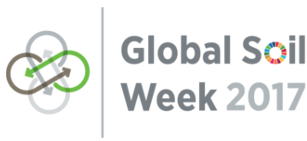If land and soil degradation continue at the current rate, it will be hard for future generations to meet their basic needs. But how can we foster the sustainable management of these – in human terms – non-renewable resources? What role should soil and land resources play in the Sustainable Development Goals (SDGs) and Post-2015 Development Agenda due to be signed at the United Nations General Assembly in New York in 2015? These were some of the issues discussed at a special event at the 20th Latin-American Congress of Soil Science in Cusco, Peru, which was organized by the IASS in collaboration with the European Commission (EC), the Food and Agriculture Organization of the United Nations (FAO) and the United Nations Convention to Combat Desertification and Drought (UNCCD).
The event focused on the priorities from a Latin American perspective. “Latin America must play an important role in combating soil and land degradation since the region is globally significant as a carbon sink, particularly in the Amazon basin, with great biodiversity and ecosystem heterogeneity. At the same time, Latin America suffers from a high rate of natural resource degradation and is the region with the most unequal distribution of land in the world”, argued the environmental engineer Ivonne Lobos Alva from the Global Soil Forum at the IASS. The SDGs should take this into account.
Dr Pedro Sanchez from Columbia University praised the “quantitative character” of the proposed SDGs, such as the goal of doubling agricultural productivity by 2030 or restoring degraded land and soil by 2020, but warned that this quantification needs to be made more specific for the issue of soil and land degradation. Dr Moujahed Achouri, Director of the Land and Water Division of the FAO, stressed the need for partnerships between actors in the soil community and stakeholders working on the sustainable management of other related natural resources as well as with policy makers in order to ensure the effective integration of soils in the SDG agenda.
The presidents of several national soil science associations present at the event stressed the need to tackle priority problems such as reductions in soil organic carbon and soil fertility, soil erosion, as well as the compaction of soil resources and salinity and their triggers, for example, deforestation, ineffective use of fertilisers and inappropriate agricultural practices.
Participants also highlighted the need to consider social and economic issues connected to the degradation of soil and land, such as poverty and hunger. This message was reinforced by Sergio Zelaya of the UNCCD Secretariat, who said “we need innovative strategies to keep soils and land on the agenda. Soil and land are highly connected and it is now necessary to work together to agree on indicators.” Echoing this sentiment, Dr Ronald Vargas of the FAO argued that there is a need to work on indicators and think forward to the implementation phase to find opportunities for collaboration, for example, within the framework of the Global Soil Partnership and the Global Soil Week.
Participants agreed to work on a proposal for indicators that address the proposed SDGs and targets and to further discuss these at the Global Soil Week in 2015.


